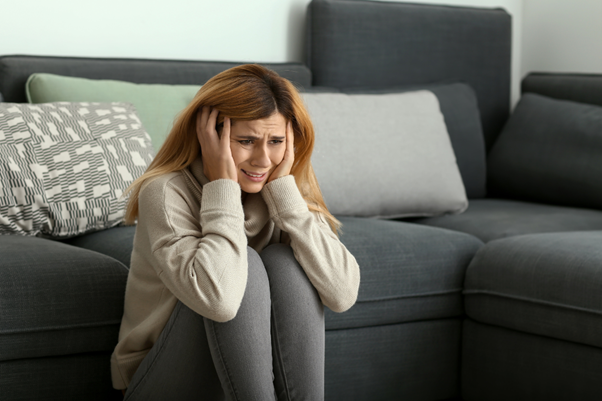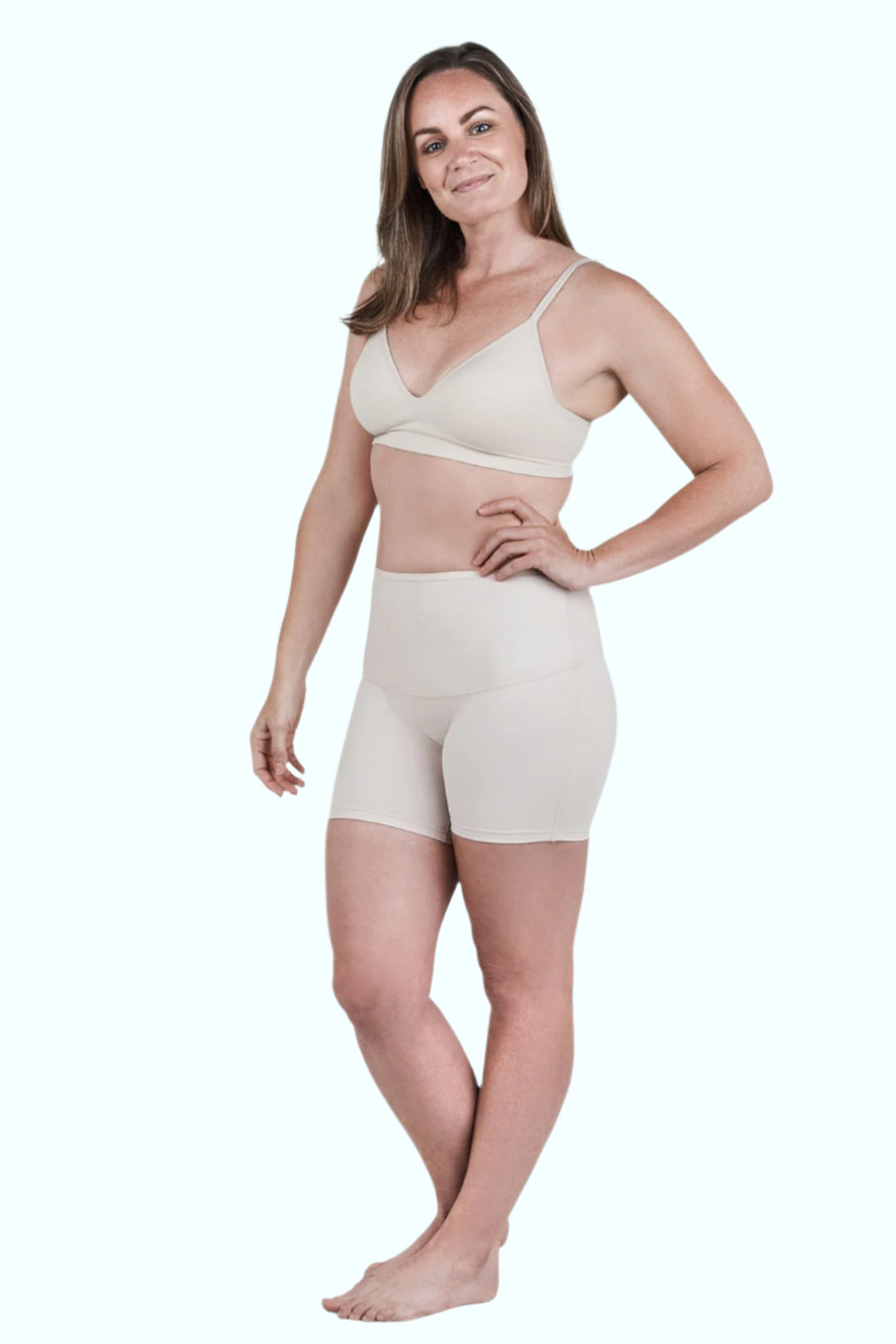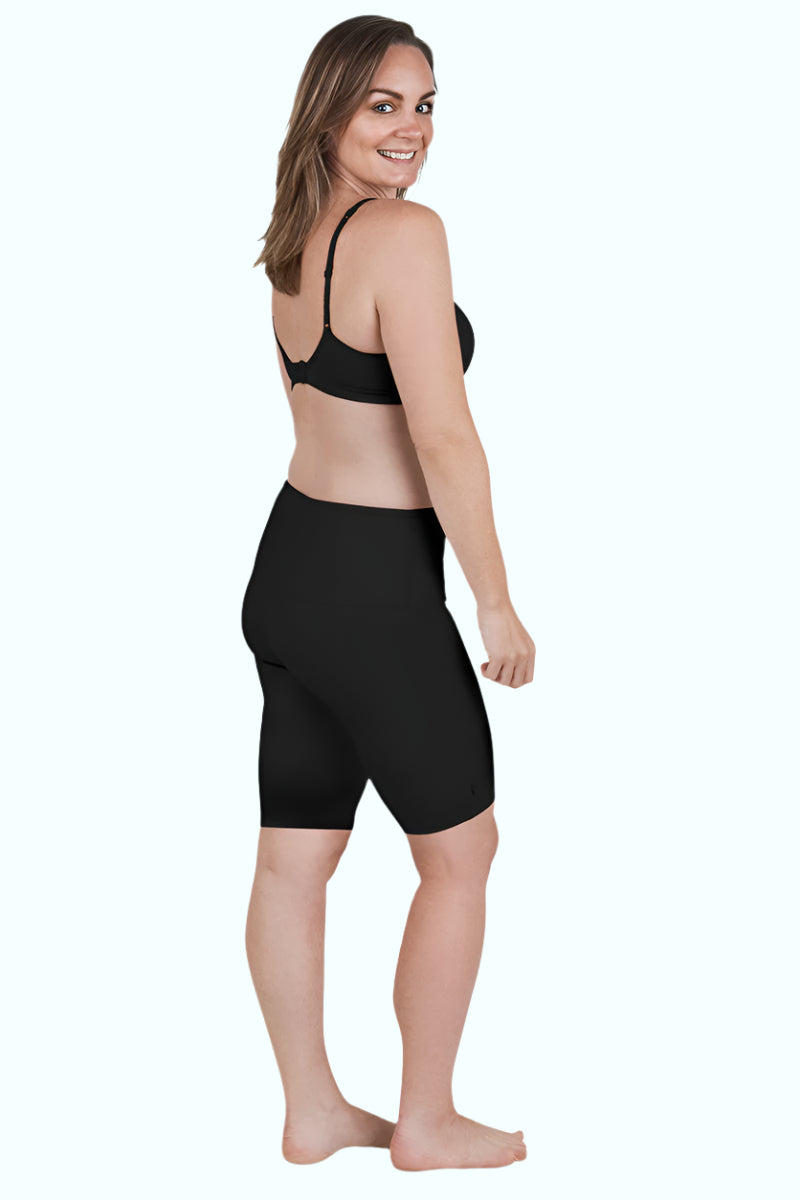Approximate Reading Time: 9 minutes
Urinary leakage can have serious implications on your confidence and ability to go about your everyday life. Urinary leakage is treatable and there are many things you can do with the help of specialist health professionals and on your own to laugh again without leaking and improve your quality of life.
This blog will cover:
- What urinary leakage is,
- Types of urinary leakage and
- Causes of urinary leakage as well as
- Stages of urinary leakage.
What is Urinary Leakage?
Urinary incontinence is involuntary passing of urine or poor bladder control which can happen for several reasons.
There are 4 Main Types of Urinary Leakage
1. Stress Incontinence
Stress Incontinence has nothing to do with emotional stress - it is the leaking of small amounts of urine during activities that increase pressure inside the abdomen and push down on the bladder. This occurs mainly in women and sometimes in men (often after prostate surgery). Being a company focused on women’s health, we are focused on stress incontinence in women.
Stress leakage is most common with activities such as coughing, sneezing, laughing, walking, lifting, or playing sport.
We are currently researching and testing a solution to assist women who experience light bladder leakage due to stress incontinence and we will keep you updated. Please come back to this page to check for any updates or simply become a registered user on our website and receive our eNews.
Update: See our breakthrough new product for Mild Stress Urinary Leakage and Mild Bladder and Uterine Prolapse.
Possible Causes of Stress Incontinence
Stress leakage in women is often as a result of pregnancy, childbirth and menopause. Pregnancy and childbirth often stretch and weaken the pelvic floor muscles that support the bladder and urethra causing stress leakage during activities that push down on the bladder. This can also be caused by a traumatic vaginal delivery.
Following childbirth women’s abdominal muscles are often weak or separated. If these muscles are not healed over time it puts a lot of stress on the back and pelvic floor muscle causing low back pain and weakened pelvic floor muscles. To understand this, imagine your abdomen and back are 2 sides of a rectangle and the top is your diaphragm and the bottom your pelvic floor. If any one of the sides of the rectangle are weakened the whole rectangle may collapse or have adverse effects on the other sides of the rectangle, which is effectively your core. One of the critical reasons to address your abdominal muscle separation (DRAM) postpartum - see the SRC Recovery garments range.
It can also happen to women who have not had children and some studies show this to be one in five women over 45 years experiencing this type of incontinence.1
During menopause, the hormone oestrogen is produced in lower quantities. With less oestrogen, women can experience stress incontinence during menopause because one of its functions is to maintain the thickness of the urethra lining to keep the urethra sealed after passing urine.
Other factors contributing to stress incontinence include diabetes, chronic cough (linked with asthma, smoking or bronchitis), constipation and obesity.
2. Urge Incontinence
Urge incontinence is a sudden and strong need to urinate, which may also be referred to as an ‘overactive bladder'.
The condition is not yet fully understood but it seems to become more common with age. Symptoms may get worse at times of stress and may be made worse by caffeine in tea, coffee and fizzy drinks or by alcohol. Urge incontinence may also occur as a result of constipation, an enlarged prostate gland in men or the result of a long history of poor bladder habits.
Possible Causes of Urge Incontinence
Urge incontinence has been linked to stroke, Parkinson's disease, MS and other conditions which may interfere with the brain's ability to send messages to the bladder.
3. Urinary leakage associated with chronic retention
Incontinence associated with chronic retention is when the bladder is unable to empty properly, resulting in frequent leakage of small amounts of urine.
Symptoms that your bladder is not completely emptying include:
- need to strain to pass urine
- a weak or slow urine stream
- feeling as if your bladder is not empty just after going to the toilet
- little or no warning when you need to pass urine
- passing urine during sleep
- frequent urinary tract infections or cystitis, and
- 'dribbling' of urine after visiting the toilet
Possible Causes of Chronic Retention Incontinence include:
- a urethra blockage caused by a full bladder, as the full bladder can put pressure on the urethra, making it difficult to pass urine
- an enlarged prostate
- a prolapse of pelvic organs which can block the urethra
- damage to the nerves that control the bladder, urethral sphincter or pelvic floor muscles
- diabetes, MS, stroke of Parkinson's disease (these conditions can interfere with the sensation of a full bladder and with bladder emptying), and
- some medications can interfere with bladder function
4. Functional Incontinence
Functional incontinence is defined as physical, intellectual or environmental issues that can be a contributing cause of incontinence for people with a normal bladder function.
Possible Causes of Functional Incontinence
Functional incontinence may be the result of not being able to get up and walk to the toilet;
- when the toilet is hard to get to or use; e.g.: lack of handrails, good lighting, etc.
- not being able to find the toilet without help
- clothing that is hard to remove in the toilet;
- the inability to communicate the need for going to the toilet
- Some of the causes of functional incontinence include problems with walking (arthritis or cerebral palsy) and problems with memory or learning like dementia and intellectual disabilities.
What should you do if you have Stress Urinary Leakage?
If you are involuntarily passing urine when coughing, sneezing, laughing, lifting weights, or playing sport then you are not alone, and you can do something about it. An Australian study found that over a three-month period, 50% of women aged 45-59 years of age experienced some degree of mild, moderate or severe urinary incontinence.2
Stress urinary incontinence (SUI) is the most prevalent type of urinary leakage3, also known as effort incontinence, is due essentially to insufficient strength of the pelvic floor muscles and caused by loss of support of the urethra. It’s almost always a result of an underlying and treatable medical condition but is underreported to medical practitioners.3
As many as 4 in 10 women suffer with urinary leakage during pregnancy4. During pregnancy, your baby grows and pushes down on your bladder, urethra, and pelvic floor muscles. Over time, this pressure may weaken the pelvic floor muscles and lead to leaks or problems passing urine.
Most problems with bladder control during pregnancy go away after childbirth when the muscles have had some time to heal. Problems during labor and childbirth, especially vaginal birth, can weaken pelvic floor muscles and damage the nerves that control the bladder. Most problems with bladder control and continence that happen as a result of labor and delivery go away after the muscles have had some time to heal. If you’re still having stress urinary leakage issues 6 weeks postpartum, talk to your doctor, nurse, or midwife.
Step 1 is to see your health care practitioner.
Here’s a list of medical experts who can all assist with urinary leakage from a number of different perspectives and in different ways:
- General practitioners (GP) can assess, diagnose and treat urinary leakage. They have varying levels of knowledge and experience with incontinence. Some may choose to refer you to a continence health professional rather than diagnose and treat your condition. In many cases it is important to involve your GP in your continence care as they have good knowledge of your health history, including any medical conditions, surgery or medications you may be on, which may increase your chances of developing continence issues.
- Urologists have the combination of medical and surgical training who treat men and women with kidney, bladder and urinary problems.
- Gynaecologists specialise in preventing and treating illnesses of the female reproductive organs. If you are incontinent, your general practitioner may refer you to a gynaecologist for urinary incontinence treatment.
- Urogynaecologists are gynaecologist who have undertaken further advanced specialist training to deal with the complexities of vaginal prolapse and types of bladder dysfunction including urinary leakage.
- Specialist pelvic floor health physiotherapists hold post graduate qualifications specializing in pelvic floor muscle training. They can assess your pelvic floor function and tailor an exercise program to meet your specific needs. They can also discuss relevant lifestyle factors with you. Many other physiotherapists have an interest in women's health and/ or pelvic floor and do not hold post graduate qualifications but may work exclusively in this area and be a great source of help.
- Pharmacists can offer advice on medications that may cause or aggravate incontinence. They may also be able to provide you with continence product advice, free information resources and the details of local continence service providers.
- As stress urinary leakage is often linked with obesity, and Accredited Practicing Dietitian will have the qualifications and skills to provide expert nutrition and dietary advice to assist with safe and sustainable weight loss.
- As the incidence of stress urinary leakage increases with age, a geriatrician - a doctor who specialise in providing medical care for the elderly, may be the best place to start. Rather than focus solely on the condition and cure, they also deal with the social and rehabilitative aspects of an elderly person's health.
With the help of your health care professional you will be able to ascertain the STAGE of your urinary leakage:
Stages of Urinary incontinence
Stage I - Light, urine loss quantity maximally until 10 g (10 mls)/24 hour
Stage II - Moderate, urine loss quantity of 11 to 50 g (11-50 mls)/24 hour
Stage III - Heavy, urine loss quantity over 50 g (50+ mls)/24 hour
The earlier you can address the problem the easier it will be to treat, so please don’t put it off any longer.
Step 2 - Your health care professional is likely to suggest some things you can do at home to help treat urinary leakage.
Many women do not think that such simple actions can treat urinary leakage. But for many these somewhat simple steps make urinary leakage go away entirely or help with the severity of urinary stress incontinence. These steps may include:
- Doing Kegel exercises. If you have stress incontinence, Kegel exercises to strengthen your pelvic floor muscles may help. Some women have urinary symptoms because the pelvic floor muscles are always tightened. In this situation, Kegel exercises will not help your urinary leakage symptoms and may cause more problems, so please talk to your doctor or nurse about your urinary leakage symptoms before doing Kegel exercises. Kegel exercises work differently for each person. It may take 4 to 6 weeks before you notice any improvement in your symptoms. Your symptoms may go away totally, you may notice an improvement in your symptoms but still have some leakage, or you may not see any improvement at all. But even if your symptoms don’t get better, Kegel exercises can help prevent your urinary leakage from getting worse. You may need to continue doing Kegel exercises for the rest of your life. Even if your symptoms improve, urinary leakage can come back if you stop doing the exercises.
- Another way of activating your pelvic floor and potentially decreasing your urinary incontinence whilst improving your quality of life, is trying a revolutionary new compression underwear product specifically designed and tested for this - SRC Restore
- Losing weight. Extra weight puts more pressure on your bladder and nearby muscles, which can lead to problems with bladder control. If you are overweight, your chosen health care professional can help you create a plan to lose weight by choosing healthy foods and getting regular physical activity.
- Changing your drinking choices. Drinks with caffeine, carbonation (such as sodas), or alcohol may make bladder leakage or urinary leakage worse. Your doctor might suggest that you stop drinking these drinks for a while to see if that helps.
- Quitting smoking. Smoking can make many health problems, including urinary incontinence, worse.
- Treating constipation. Your doctor might recommend that you eat more fibre, since constipation can make urinary leakage worse. Eating foods with a lot of fibre can make you less constipated.
- You can also buy pads or protective underwear while you take other steps to treat urinary leakage. These are sold in many stores that also sell feminine hygiene products like tampons and pads. Although it is a band-aid solution it will make everyday life a lot more comfortable and less stressful.
The most important of the above in treating stress urinary leakage is improving the strength of your pelvic floor. Most women have heard about it and know the basics about the importance and function of their pelvic floor, yet few take Pelvic Floor exercise seriously. So, let’s explore the importance of this amazing muscle!
The importance of your pelvic floor
You could say it’s the most important muscle that rarely gets mentioned or exercised consistently and you don’t have to be in the gym to do it, in fact you can do it anywhere!
Research indicates that stress urinary leakage, pelvic organ prolapse, or both occur in about half of all women who have given birth. These issues are closely associated with birth-related injury to the pelvic floor muscles.5 Many issues can cause the structure of the pelvic floor to weaken, including:
- age
- certain illnesses
- lasting health issues that cause increased pressure in the abdomen and pelvis, such as a chronic cough
- pregnancy
- trauma during delivery
- multiple deliveries
- large babies
Practicing for just a few minutes a day could assist with urinary leakage, prolapse after childbirth and improve your sex life.
Pelvic floor exercises are of great benefit for pregnant women because the pelvic floor muscles can stretch and weaken during labor. Strengthening these muscles may help prevent urinary incontinence after the baby is born and some health care professional recommend that women who wish to become pregnant start pelvic floor exercises before getting pregnant.
To exercise your pelvic floor muscles, (also known as Kegels) you should be seated comfortably (It may be easier to learn how to do Kegels correctly while lying down) and then, try to squeeze their pelvic muscles without holding your breath. It is important to isolate the correct muscles without tightening your stomach stomach, butt / glute and or thigh muscles. You can find a much more detailed explanation here, some anatomical diagrams, how to find and isolate your pelvic floor muscle, as well as other exercise you can perform.
It’s recommended that women aim to do 10 long squeezes — holding each for 8 seconds — followed by 10 short squeezes. However, initially, it may be a good idea to practice holding a squeeze for a few seconds at a time.
By practicing regularly, you should be able to add more contractions to your routine every week. As with all exercise, it is important to do this gradually and to avoid overworking this muscle group.
Within a few months, you may notice a reduction in the symptoms of stress urinary leakage. Even if your symptoms resolve completely, you should continue strengthening your pelvic floor muscles and make it a regular part of your fitness routine.
Innovative products like SRC Restore - a compression garment can activate your pelvic floor muscles and SensaTone Pelvic Floor Stimulator will help exercise and strengthen your pelvic floor muscles.
Here’s are 2 excellent apps to help you do your pelvic floor exercises http://app.pelvicfloorfirst.org.au/ and https://pelvic.app/
It’s never too late or too early to start on your road to pelvic health.
References:
- https://www.sciencedaily.com/releases/2016/11/161109085813.htm
- https://www.continence.org.au/pages/key-statistics.html
- https://www.ncbi.nlm.nih.gov/pmc/articles/PMC4520337/
- Sangsawang, B., & Sangsawang, N. (2013). Stress Urinary Incontinence in Pregnant Women: A Review of Prevalence, Pathophysiology, and Treatment. International Urogynecology Journal; 24(6): 901–
- https://www.medicalnewstoday.com/articles/327511.php?fbclid=IwAR0vwkPrk7cts_yjUy3OlT9MJCQBcMa9Jx2U7wK0Ep_C_-REKuNgbBhheSg#causes













